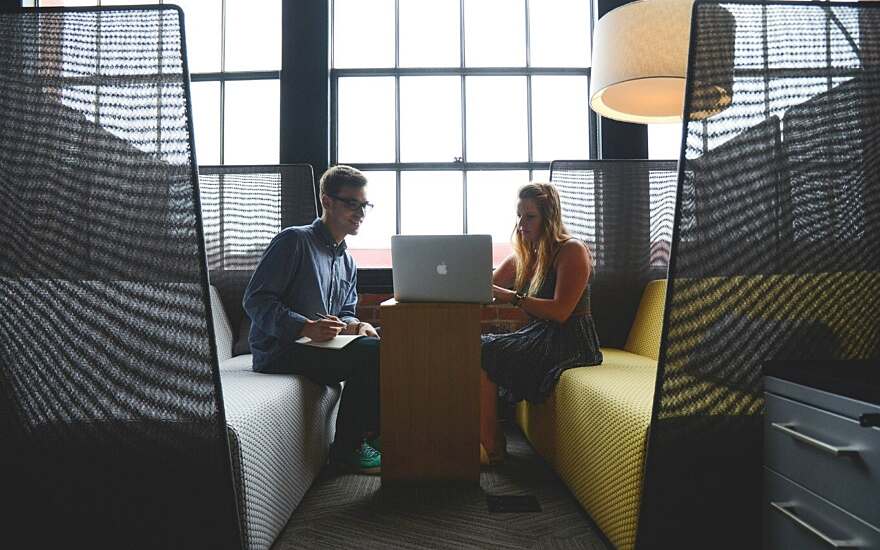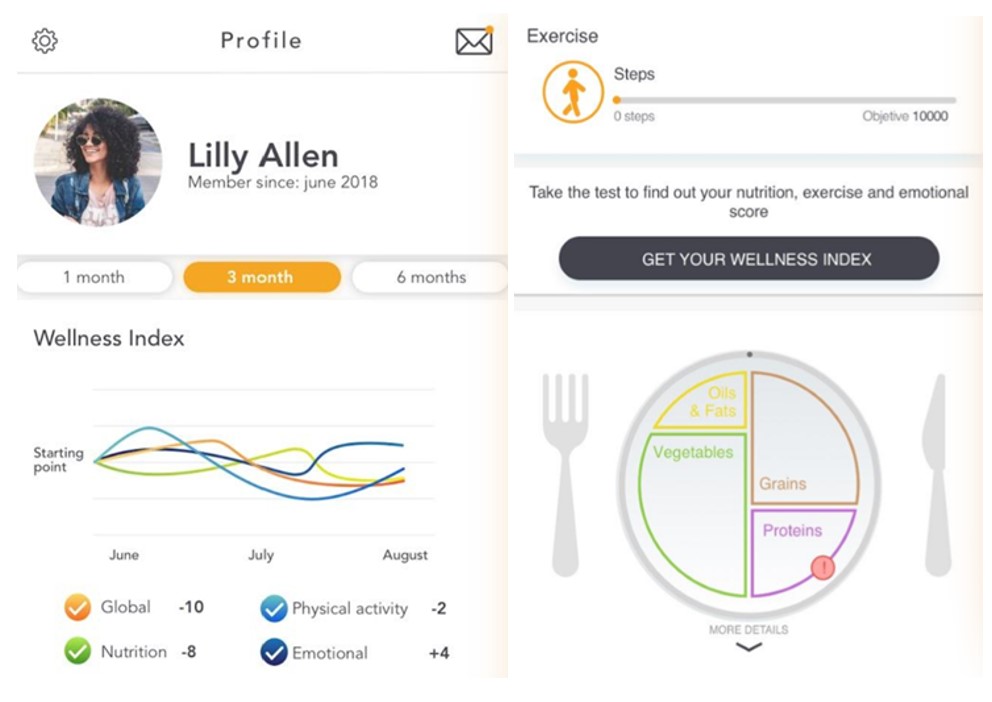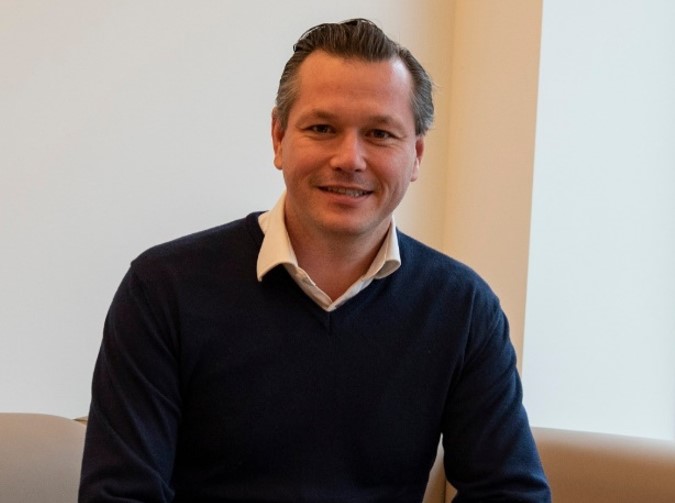
The corporate garage: a new way of working for successful startup and corporate partnerships
It sounds relatively straight forward - big established corporates working harmoniously with smaller, newer startups in order to innovate the food system. The processes may be in place to enable this, but the cultural differences between ways of working in these different organisations bring their own set of challenges. Throw research institutes into the partnership mix and things get even more confusing!
But what if there were a solution? What if you could level the playing field, so that startups and corporates could work together as equals and make the most of the advantages each model brings? It turns out one EIT Food project has found a way of doing just that.
How to make a mixed consortium really work
Ignace De Nollin from Colruyt Group is the project lead for the EIT Food SmartFoodLogging project, which is an excellent example of a corporate, startup and university effectively working together to innovate the food system. The project is developing a platform connecting health coaches and consumers together to help them make better food choices. This is interesting in itself - a more personalised approach to nutrition will undoubtably yield better results than a one-size-fits all approach, and by utilising technology this can be made available to a wide group of people in a convenient way.
The project team also includes Spanish startup BeYou, and university KU Leuven, and with the project now nearing the end of its second year, the consortium are currently discussing the next steps in terms of getting the technology that they have developed to market. However, it’s not just the product they are interested in. They are also discussing how to continue their relationship as a consortium, which is testament to the success of this partnership. So how have they made it work?
Ignace explains:
“I have been responsible for working on some of the more disruptive innovations within Colruyt group, and one of them was a project we developed in-house, called ‘SmartWithFood’. This involved the development of an app which will tell you whether products scanned in store match your dietary needs, based on your profile. The project was a success - you can download the app in the app store - and we decided to turn it into a spin-off company.

The SmartWithFood platform enables users to track their wellbeing needs
“SmartWithFood is now a separate unit offering our services to other retailers, and this is how Colruyt is engaging with the SmartFoodLogging project - as a startup ourselves with the mission of building the digital bridge between the individual and food. We use a lot of data science and insights to analyse and enrich retail products that we can then match to consumers and to product services. Importantly, we use this vehicle to engage as the third partner within the EIT Food SmartFoodLogging consortium: KU Leuven, BeYou and Colruyt group via SmartWithFood.”
The corporate garage: a new way to collaborate

There is belief that in a partnership, challenges can be overcome by building on the advantages that each organisation brings: startups are really agile, dedicated teams, which really enable entrepreneurship; larger corporates have more access to funding, relationships and insights, as well as plenty of know-how and a huge data-base of consumers. The art, however, is in how these very different organisations can combine their skills and work together.
Importantly, the various parties acknowledge and understand that there are differences in the way of working, and in doing so, can use each other’s best capabilities in order to make the partnership a success.
By engaging through the SmartWithFood unit, Colruyt Group works in familiar ways to other startups - making it an easy partner to collaborate with. This way of working facilitates an increased understanding between the different organisations while breaking down traditional barriers, ultimately enabling innovation in a more effective and efficient way.
“Each partner has their own advantages. Startups often struggle with finding funding, corporates struggle in terms of agility, so why not use the capabilities of the corporate to enable the agility of the startup, or the customer insights of the big corporate to enable the activities of a startup? In Colruyt Group we call this ‘creating the environment of a corporate garage’.”
By exploring how to make it easy to work with startups, Colruyt has continued to benefit from the advantages of the corporate but in a different environment with a dedicated team that don’t have to follow all the same internal processes. Ignace continues:
“As a corporate organisation, I think we need to create an environment where we can test and build proof of concepts. Ideally, new product developments need to be done in an agile environment, and once they are proven, and the risk is less, the corporates can really scale up. In the beginning, speed can be a challenge with corporates, however if you have a dedicated team that is working in an entrepreneurial environment on a specific project like we have been doing with the SmartFoodLogging project, you can really get results within a short frame of time.”
New insights and benefits
This is an interesting way of working which has started in the innovation sector over the last couple of years as organisations seek to collaborate more effectively with those with very different expertise to themselves. For Colruyt Group, being able to work with different disciplines, such as with the researchers of KU Leuven and the entrepreneurs of BeYou has provided a new dimension to their capabilities.
“I’ve seen first-hand that having the ability to adapt to changes in the markets is crucial for larger companies - it’s important that they rapidly adopt new insights, new requests from consumers, and new technologies. We believe that working in this way, as a consortium for this project, enables us to do this, and to really address some of the challenges that the food system is currently facing.”
This approach provides new insights to building entrepreneurship and agility within big projects and to ultimately foster more disruptive innovations.
How EIT Food is delivering innovative agrifood ecosystems
EIT Food actively brings different projects and Partners together to form innovative ecosystems, and this has helped the SmartWithFood unit at Colruyt Group to really focus their efforts.
“I believe with this approach EIT Food is really making a difference in some key areas - I think we can help transform the global food system to bring transparency to the consumer, to bring convenience to the consumer and (the key goal for me) to bring personalisation to the consumer.”

Ignace De Nollin from Colruyt Group is the Project Lead for the SmartFoodLogging project.
About the author: Dr Lucy Wallace is a freelance writer with a background in research communications and an interest in novel engagement methods with diverse audiences.
More News from EIT Food West

Nutrition Trend Report 2025 – In Collaboration with Nutrition Hub

Südzucker Group wins EIT Food Corporate Startup Collaboration Award

